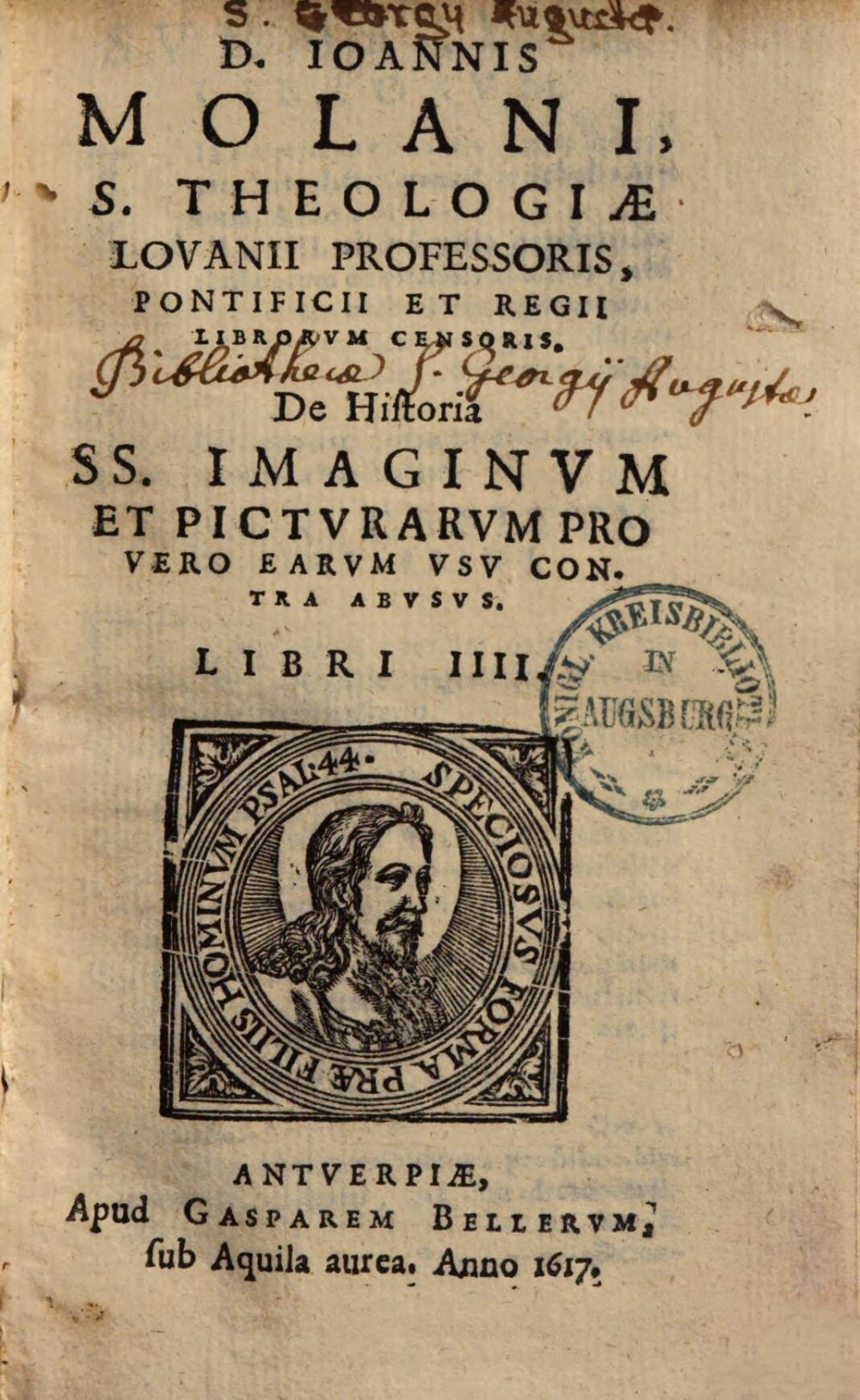
Augsburg, Staats- und Stadtbibliothek — Th H 1475. Digital Reproduction: München, Bayerische Staatsbibliothek, 2015.
Molanus condemns pagan artworks as idols that need to be abolished but also emphasises that what is allowed in writing is also allowed in art.
“In this matter, Clement of Alexandria shows himself to be sharp and refuses to look at the figure of the painted idol. Indeed, after having taught in his Pedagogue how the husband should wear his ring and the wife hers, and which rings should not be worn, he adds about the seals on the rings: If we have a symbol, whether it be a dove, a fish, or a boat sailing swiftly in the wind, or a lyre, that musical instrument used by Polycrates, or a ship’s anchor like that which Seleucus had engraved on his ring, and if it is a sinner he will remember the apostle and the little children saved from the waters. Let no idols be impressed on it, to which it is forbidden to attach oneself, nor a sword or a bow, when one is pursuing peace oneself, nor a cup when one is sober and temperate.’
The fact remains that certain things are tolerated in language, and the same must be tolerated in painting, for he who blows his nose too hard will have a nosebleed. Nevertheless, let us keep in mind the words of God found in Zechariah: “In that day,” says the Lord of hosts, “I will abolish the name of the idols from the earth, and the memory of them shall be lost.”
“Vehemens est autem hac in re Clemens Alexandrinus nolens vel respici semel in faciem picti idoli. Cum enim in suo Poedagogo docuisset: ‘quomodo annulus à viro sit serendus et quomodo ab uxore, quodque plures annuli non sint ferendi, suiicit de sigillo annuli, Sint autem nobis signacula, columba, vel piscis, vel navis quae celeri cursu à vento sertur, vel lyra musica qua usus est Polycratus, vel ancora nautica quam insculpebat Seleucus. Si sit piscans aliquis meminerit Apostoli et puerorum qui ex aqua extrahuntur. Neque enim idolorum sunt imprimendae facies, quibus vel solum attendere prohibitum est. Sed nec ensis vel arcus iis qui pacem persequuntur, nec pocula qui sunt iis moderati ac temperantes.’
Interim sicut in loquendo aliquid toleratur, sic etiam in picturis nonnibil istiusmodi est tolerandum. Nam qui nimium emungit elicit sanguinem. Memores tamen simus divinorum verborum quae sunt apud Zachariam, et erit in die illa dicit Dominus exercituum, disperdam nomina idolorum de terra et non memorabuntur ultra.”
Molanus 1996, 291-292.



